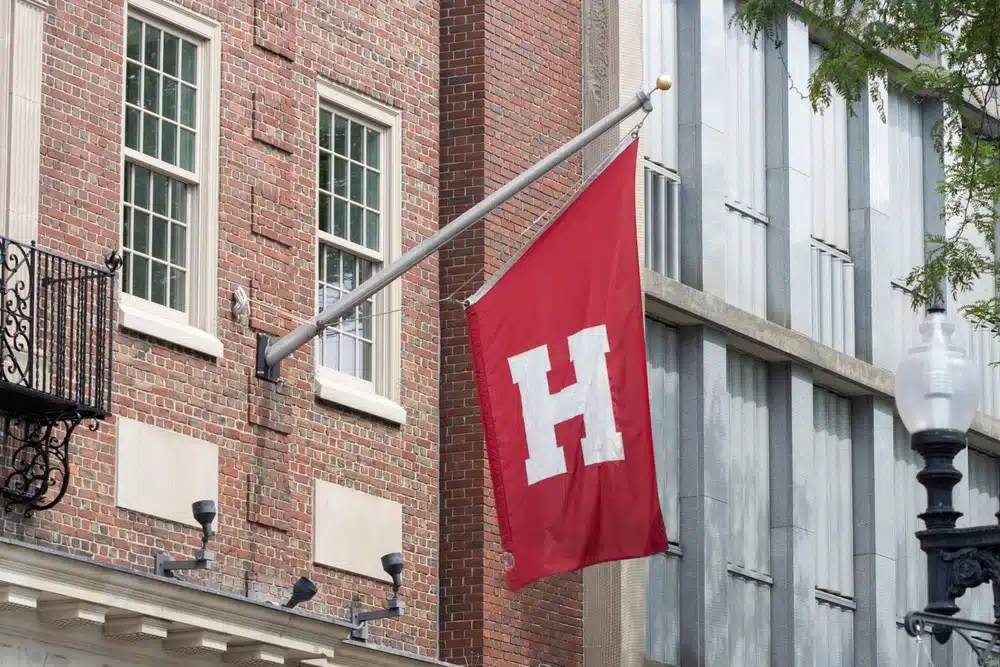Exploring Harvard’s Academic Calendar
The Harvard Academic Calendar is an essential guide for every Harvard student. It helps structure the academic year and provides important dates to keep in mind. This deep dive will explore the structure, implications for student life, unique features, and how students can navigate it.
Understanding the Structure of Harvard’s Academic Calendar
Harvard’s academic calendar operates on a semester system from late August to early May. It is divided into two main segments: the fall and spring semesters, each encompassing approximately 15 weeks of study.
Harvard University, located in Cambridge, Massachusetts, is renowned for its rigorous academic programs and rich history. The structure of Harvard’s academic calendar plays a vital role in ensuring a well-organized and efficient learning environment for its students.
The fall semester at Harvard typically starts in mid-August, just as the summer season begins to wane. As the leaves change color and the air becomes crisp, students eagerly return to campus, ready to embark on a new academic journey. The fall semester spans several months, allowing ample time for students to delve into their chosen subjects and engage in meaningful discussions with their peers and professors.
Students face balancing their coursework with extracurricular activities and personal commitments as the fall semester progresses. However, Harvard’s academic calendar recognizes the importance of rest and rejuvenation. To this end, it includes a one-week Thanksgiving break, allowing students to spend quality time with their families and recharge before the final push toward the end of the semester.
The culmination of the fall semester at Harvard is marked by a period of final exams. These exams test students’ knowledge and understanding of the material covered throughout the semester, allowing them to demonstrate their academic growth and proficiency. It is a time of intense studying, late-night library sessions, and the occasional stress-induced coffee run.
After the conclusion of the fall semester, students eagerly anticipate the start of the spring semester. As the winter season gives way to budding flowers and warmer temperatures, Harvard’s campus comes alive with renewed energy and excitement. Much like its fall counterpart, the spring semester spans several months, providing students ample time to explore new subjects and engage in intellectual discourse.
Similar to the fall term, the spring term at Harvard includes a week-long spring break. This break offers students a chance to relax, recharge, and perhaps even embark on a much-needed vacation. Whether basking in the sun on a tropical beach or exploring new cities and cultures, students return to campus after spring break with renewed enthusiasm and a fresh perspective.
Harvard’s academic calendar is punctuated with important dates and deadlines throughout the academic year. These milestones serve as guideposts for students, helping them stay on track and plan ahead. Students must stay aware of these crucial dates, from registration deadlines for classes to the last dates for dropping a course, to ensure a smooth and successful academic journey.
Additionally, exam periods are a significant part of Harvard’s academic calendar. These designated periods allow students to focus solely on their exams, giving them the time and space to prepare and perform to the best of their abilities. The exam periods can be intense, but they are also a testament to the dedication and hard work that Harvard students exhibit throughout the semester.
Finally, Harvard’s academic calendar culminates with commencement dates. These dates mark the end of the academic year and the beginning of a new chapter for graduating students. Commencement is a time of celebration, reflection, and anticipation as students bid farewell to their alma mater and embark on new adventures and opportunities.
Overall, the structure of Harvard’s academic calendar is designed to provide students with a well-rounded and enriching educational experience. From the fall and spring semesters to important dates and deadlines, each component plays a crucial role in shaping the academic journey of Harvard students and fostering a community of intellectual growth and achievement.
The Role of the Academic Calendar in Student Life
The academic calendar is not just a tool to organize the academic year; it plays a vital role in shaping students’ lives inside and outside the classroom. It provides a framework that influences various aspects of student life, from balancing academics and extracurriculars to planning for exams and holidays.
Balancing Academics and Extracurriculars
One of the significant advantages of having a clear and well-defined academic calendar is that it helps students effectively balance their academic responsibilities with extracurricular activities. The academic calendar serves as a reference point for scheduling activities at universities like Harvard, where a wide range of clubs, sports teams, and other groups thrive. By aligning their events and practices with the academic calendar, these organizations ensure maximum participation from students.
For example, a student who is part of a debate club can plan their practice sessions and competitions around the academic calendar. They can schedule intensive training sessions during breaks or weekends when there are no classes, ensuring their academic commitments are not compromised. This synchronization between the academic calendar and extracurricular activities fosters a healthy balance between personal growth and academic success.
Planning for Exams and Holidays
Another crucial aspect of the academic calendar is its role in helping students plan their study schedules for midterms and final exams. The calendar allows students to allocate their time and resources effectively by providing a clear timeline for these assessments. They can create study plans, set goals, and track their progress, ensuring they are adequately prepared for their exams.
Moreover, the academic calendar also aids in personal planning, such as booking flights home for the holidays or scheduling family visits. By knowing the dates of breaks and holidays, students can make arrangements in advance, avoiding last-minute stress and ensuring they can spend quality time with their loved ones.
For instance, a student who lives far away from their family can use the academic calendar to plan their travel during extended breaks. They can take advantage of the knowledge of when the semester ends and begin to book affordable flights and accommodations, making the most of their time off without worrying about missing classes.
In conclusion, the academic calendar is not just a mere schedule of classes and exams; it plays a significant role in shaping student life. By providing a framework for balancing academics and extracurriculars and aiding in planning for exams and holidays, the academic calendar is an essential tool that contributes to students’ overall well-being and success.
Unique Features of the Harvard Academic Calendar
Even within the framework of a traditional semester system, Harvard’s calendar has features that set it apart from other universities.
Harvard University, renowned for its academic excellence and rich history, boasts an academic calendar as unique as the institution. With a myriad of distinctive features, Harvard’s academic calendar offers students unparalleled opportunities for growth, exploration, and intellectual development.
J-Term and Other Harvard-Specific Traditions
One such unique feature is the January Term, known as the “J-Term.” This is a short period in January, between the fall and spring semesters, officially known as the winter session, where students can take intensive courses, conduct research, or participate in internships. The J-Term provides a valuable opportunity for students to delve deeper into a particular subject of interest or explore new areas of study in the 3-week period. It allows for focused learning and concentrated engagement, enabling students to make the most of their academic pursuits.
But the J-Term is not the only Harvard-specific tradition that sets the university apart. Another cherished tradition is the renowned ‘Shopping Week,’ which takes place at the beginning of each semester. During this week, students have the freedom to attend any class they desire without the pressure of officially enrolling. This unique practice allows students to sample a wide range of courses, helping them make informed decisions about their academic path.
It encourages intellectual curiosity and fosters a vibrant learning community where students can explore diverse subjects and discover their true passions. However, after years of intense and widely discussed deliberations, the Harvard faculty made the decision in May 2022 to discontinue the practice of Shopping Week.
Furthermore, Harvard’s academic calendar includes a ‘Reading Period,’ a much-needed study break before the commencement of final exams. This dedicated time allows students to consolidate their knowledge, review course materials, and prepare for their assessments. It serves as a crucial period for reflection and revision, ensuring that students are well-equipped to showcase their understanding and excel in their examinations.
Flexibility in Course Scheduling
In addition to these unique traditions, Harvard also offers flexibility in course scheduling, further enhancing the student experience. Recognizing that students have diverse interests and commitments, the university provides a wide array of course options and scheduling alternatives.
Harvard’s flexible course scheduling allows students to customize their academic journey according to their needs and aspirations. Students can navigate their course load more effectively by pursuing a double major, engaging in extracurricular activities, or participating in internships. This flexibility empowers students to strike a balance between their academic pursuits and other aspects of their lives, fostering personal growth and holistic development.
Moreover, the flexibility in course scheduling enables students to take advantage of Harvard’s vast resources and opportunities. With a plethora of renowned faculty members, cutting-edge research facilities, and interdisciplinary programs, students can tailor their course selection to explore their intellectual curiosity and delve into areas that align with their career goals.
Harvard’s academic calendar stands as a testament to the institution’s commitment to providing a transformative educational experience. With unique features such as the J-Term, ‘Shopping Week,’ and flexible course scheduling, Harvard empowers students to embrace intellectual exploration, engage in meaningful learning, and chart their own path to success.
Navigating the Harvard Academic Calendar: A Guide for International Students
For international students, understanding the academic calendar is crucial for a smooth transition into life at Harvard. It not only helps them stay organized but also allows them to make the most of their time at the university.
Harvard follows a semester system, which may differ from their home countries educational systems. This adjustment can be challenging, especially for students used to different academic schedules. International students may also have to adapt to the concept of seasons, particularly if they come from countries with different climatic conditions. Understanding the academic calendar can provide them with a roadmap to help anticipate these changes and plan accordingly.
Adjusting to the U.S. Academic Calendar
When international students arrive at Harvard, they may find themselves in a new environment with unfamiliar academic practices. The U.S. academic calendar is divided into two main semesters: the fall semester and the spring semester. The fall semester typically starts in late August or early September and ends in December, while the spring semester begins in January and concludes in May. These semesters are further divided into shorter periods called modules, which focus on specific subjects or themes.
It is important for international students to familiarize themselves with the key dates in the academic calendar, such as the start and end of each semester, module registration deadlines, and exam periods. This information can be found on the university’s official website or through academic advisors. Students can plan their coursework, vacations, and other activities effectively by understanding these dates.
Utilizing University Resources for Academic Planning
Harvard University offers a variety of resources to aid international students in their academic planning. These resources are designed to help students navigate the academic calendar and make informed decisions about their courses and schedules.
One such resource is the Office of International Education, which provides guidance and support to international students throughout their time at Harvard. They offer workshops and seminars on course selection, time management, and academic success strategies. International students are encouraged to attend these sessions to gain valuable insights and tips.
Additionally, Harvard’s academic advisors are available to assist international students in planning their course schedules. These advisors have in-depth knowledge of the university’s curriculum and can help students choose the right courses based on their academic goals and interests. They can also provide guidance on how to balance coursework, extracurricular activities, and personal commitments.
Furthermore, the university’s online portal provides access to a wealth of information related to the academic calendar. Students can find detailed course descriptions, syllabi, and class schedules, allowing them to plan their academic journey effectively. The portal also offers tools for tracking progress, such as grade calculators and degree audit reports.
By utilizing these resources, international students can make the most of their time at Harvard and confidently navigate the academic calendar. They can ensure they are on track to meet their academic goals and take advantage of the numerous opportunities available.
In conclusion, Harvard’s academic calendar is more than just times and dates. It represents the rhythm of life at the university, and understanding this rhythm is key to success at Harvard. Whether you’re an incoming freshman or a seasoned faculty member, knowing the ins and outs of the academic calendar is more than useful—it’s essential.
If you need help putting the finishing touches on your college applications, at AdmissionSight, we have over 10 years of experience guiding students through the competitive admissions process.
AdmissionSight can help you put your best foot forward when applying to college this fall. Contact us today for more information on our services.







































